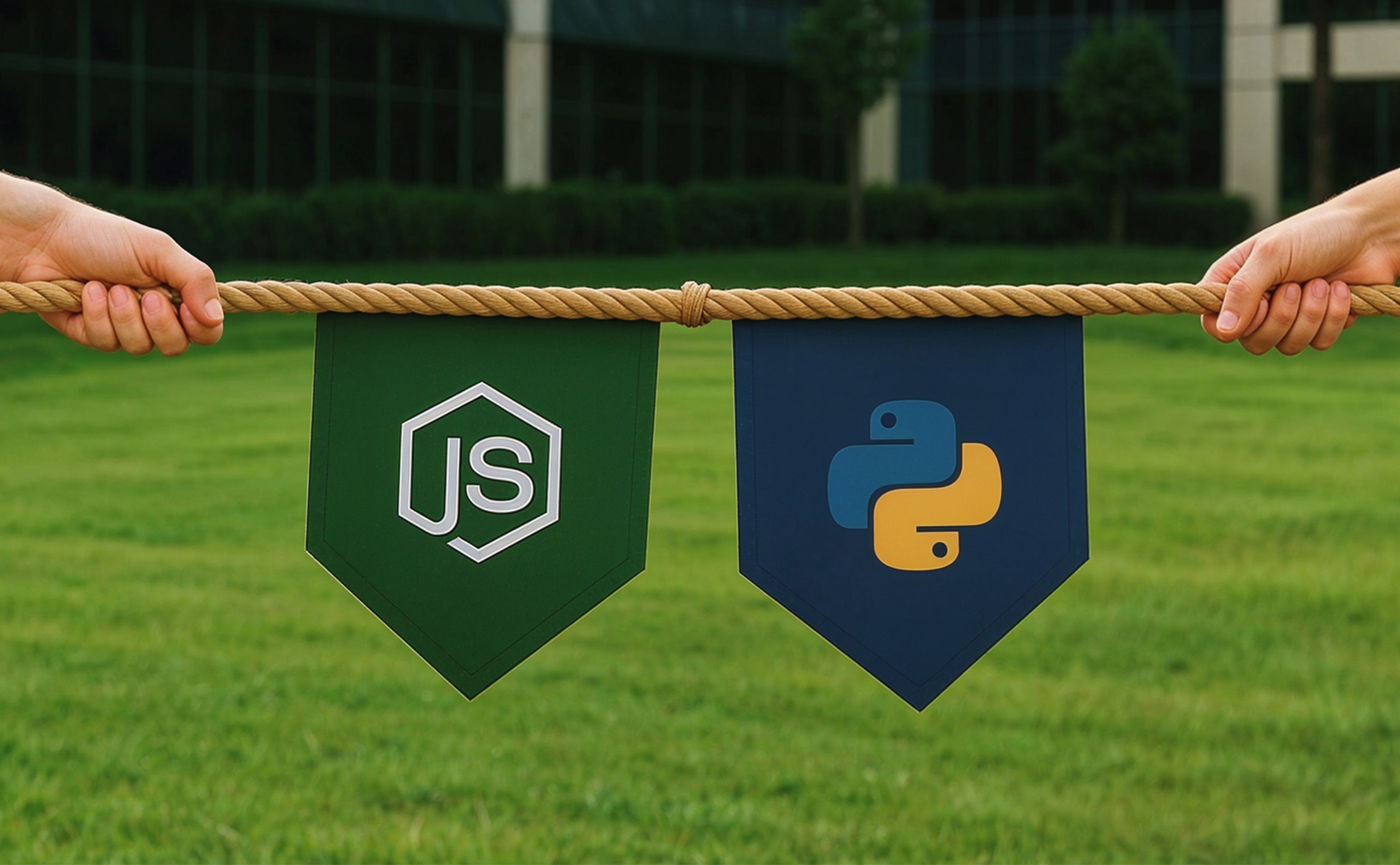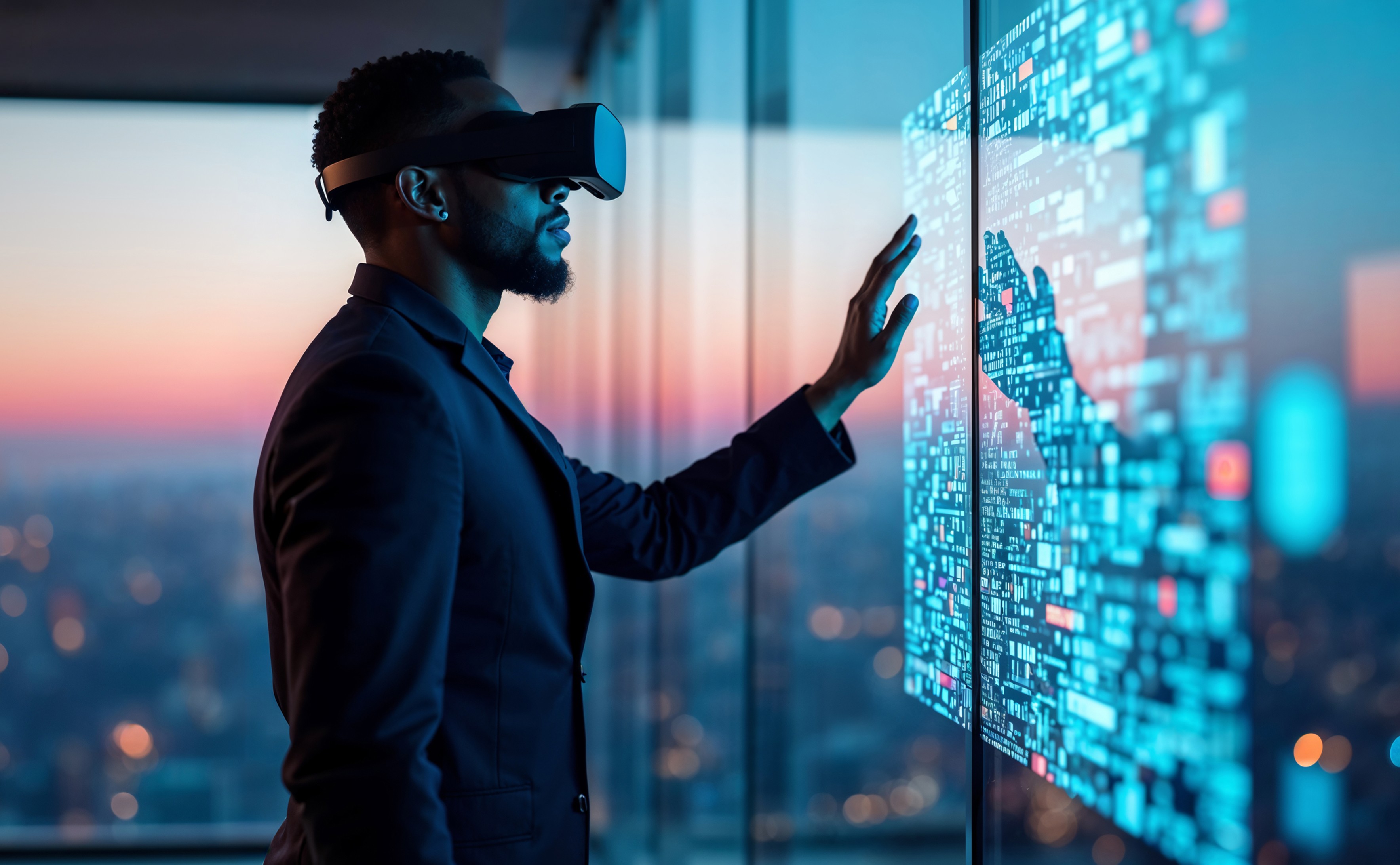How to Build a Good Fashion ECommerce Website in 2026

The traditional role of fashion retail businesses was confined to the physical storefronts and the sales that revolved around these brick-and-mortar stores. However, nowadays, the transformation has grabbed hold on online marketplaces, social media platforms and many other digital storefronts, including advanced eCommerce websites.
Modern technologies like virtual try-ons, size recommendations and AI chatbots have given customers the confidence to make purchases. The opportunities of fashion eCommerce are promising, far away from the uninspiring eCommerce experiences of the past.
Starting an online clothing store is an ideal way you can use it to grow as a brand. Thinking about how to start a clothing brand online in 2024? In this blog, we shall break down the entire process of how to build your online clothing store and get to know it in detail. Let’s dive in!
How to Build a Clothing Ecommerce Website?
A clothing eCommerce website lets shoppers shop any time of day, and it is highly convenient compared to travelling to the shop. Nevertheless, a fashion eCommerce website helps connect all channels, both online and in-store, to create an omnichannel customer experience, resulting in high revenue.
Thinking about how to build eCommerce fashion sites so as to enhance sales and revenue? Here are a few steps to building a successful apparel eCommerce website:
Do Your Market Research
The first step in selling a product is to ensure that there is an audience for it and that the market is not flooded with too many similar products, which might discourage customers from choosing your product. Your products and business shouldn’t be lost among a sea of others. It is wise to use the following tools to determine whether the requirement is enough for your brand to succeed:
- Google Trends: This tool analyses the popularity of certain keywords and search terms in various regions and languages and measures the growth over time. Google Trends helps business owners identify patterns behind customer’s buying behaviour.
- Social Media: Use social media platforms to enhance your online presence. You can also identify the trending products and how product owners market them to customers.
- Amazon: Research the top-selling products on Amazon and get reviews to earn insight into what people prefer about the items they purchase.
- Consumer Surveys: If you already have a customer base that used to purchase with you in-store, you can know their eCommerce preferences. Different survey sites make it easier to create a poll and share it via the existing email list.
Choose a Domain Name and Hosting Provider
Choosing a domain name has two key things to remember— it should be similar to your business name or relevant to the product, and it should be easy for the audience to keep in mind. You can use a domain search website to check whether the preferred domain name is available for buying. This can also be done with the help of a hosting provider who also offers various services for your apparel eCommerce website, such as website improvement, security protection, email and assistance with the website platform.
Select an Ecommerce Website Builder
Since you have the domain set and the products, then it’s your turn to build a fashion eCommerce website. You can choose from the following features for your clothing eCommerce website:
- Themes: Opt for something specific to your business, brand identity or the particular product you sell.
- Blog Posts: This gives the opportunity to improve traffic by including SEO-friendly blogs specific to the industry.
- Facebook Pixel: This lets you take data from the website metrics and use it for Facebook ads to increase sales and traffic.
Some of the most popular website builders include WordPress, Shopify, WooCommerce, etc. Understand that the online store builders have their limits, like the number of products you can upload, variations for each product, etc. Hence, before signing up with one, you need to ensure the limits are based on the business’s requirements.
By hiring an ecommerce design and development company, your business can build the website for effective performance. A trusted developer helps with suggestions if you’re not certain about which builder to choose for your site.
Plan the Website Structure and Key Pages
Before you start building the fashion eCommerce website, plan its structure and the way it needs to be organised. A credible fashion eCommerce website should know its customers and make it easy for shoppers to locate what they are looking for. Here are the core aspects you need in your online store:
- Ease of navigation in the menu and quick access search bar for the homepage
- Product pages include photos, descriptions, customer ratings, reviews and pricing
- Product recommendations based on the previous searches and purchases
- About us and contact us pages
- Mobile-optimised and responsive feature
Your website should be cohesive and visually appealing, with a uniform theme throughout. Along with the eCommerce website design pages, you can check out how to add blogs, tutorial videos and other product listings. You can think of colours and themes for an exceptional fashion eCommerce website design that keep your brand outshine the competitors.
Customise Your Website With Specialised Support
User experience is the biggest consideration as far as your eCommerce website is concerned. To make the customer experience exceptional, you can use a plethora of complex and customised themes that enhance the overall website functionality. For full-fledged support in implementing these eCommerce features, you need creators with the following skills:
- Web designers—to create layout and design of the website, with expertise in seamlessly integrating graphics, sounds, video and pictures.
- Web developers— responsible for building and maintaining websites that combine your goals for eCommerce stores and boost the customer experience.
- Front-end/Back-end developers— the user experience engineers who connect the technology with the consumer and partners as you test, optimise and update the website.
- SEO experts—who help you with keyword research, website and search engine optimisation.
- Ecommerce developer— who has ample experience working with the specific eCommerce platforms on which you wish to build your business.
Set up the Ecommerce Payment System
The primary purpose of a fashion eCommerce website is to sell products; hence, it is important to have a user-friendly payment system. Business owners use payment gateway technology to accept customer debit and credit card purchases. Setting up the storefront with popular website builders like BigCommerce, Shopify, WooCommerce, etc. makes it easy to integrate with payment processors such as Stripe or Paypal. Here are some of the shipping options you can offer:
- Free shipping: Not all businesses can afford this, though this is a great selling point. You can, however, offset the cost and improve average order value so that the customer might spend more to qualify for free shipping.
- Flat rate: This means the customers pay the same shipping cost for every order. This is the ideal option when the items you sell are relatively small in weight and size.
- Real-time shipping charge: In this feature, you calculate the shipping charge based on the product’s weight, size, and destination. It usually applies to selling large and heavy products that are costly to ship.
- Store pickup/Local delivery: The best shipping option when you operate with a local physical store. The shoppers also have the facility to return items in-store.
- Shipping costs by order price: The feature offers a reduced shipping cost for shoppers who spend a particular amount.
Fashion Website Design
Website design for fashion eCommerce should be able to convey the brand message clearly. How to design a clothing store online? You can make a fashion web design with pre-made Wordpress themes and website builder templates, or even seek the professional assistance of web designers to create an extraordinary eCommerce website design. Make sure you include the following while designing the website:
- Decide on what the brand stands for, its purpose, brand values and mission, and what the brand promises to customers.
- Choose a business name that resonates with the brand and run the ideas with a domain name generator available for free online.
- Connect the business’s mission and brand name with the logo. Nail the look of your business logo with the help of a professional web designer.
Optimise the Website for SEO
Now that your website is all prepared to receive orders, you need to gain visitors. Usually, you have two key features to gain visits, market or optimise the pages with the right SEO best practices. Irrespective of the method you use, your key objective is to show up on Search Engine Results Pages (SERPs). However, advertising through PPC (Pay Per Click) and Google Ads can be expensive. The best choice you can make is to optimise the website's SEO and earn free organic traffic.
This can be implemented for your fashion eCommerce websites with the following practices:
Perform Keyword Research
Identify the problems you need to solve for the customers, and create an intent-specific keyword list. Give priority to the long-tail keywords for high website conversions. For example, when you sell Chanderi designer print sarees, the visitors who find the site by the short-tail keyword ‘saree’ can gain you so much traffic, but not enough conventions. But when you use long-tail keywords like ‘stylish Chanderi designer print saree’, the probability of attracting the right audience is high. Keyword research tools like Google Keyword Planner, SEMrush, Ubersuggest and many others help you conduct effective keyword research.
Emphasise The Website Architecture
Website architecture defines how you organise the website for the customer experience. The website should make sense to the target users. For instance, when you sell jewellery, the product pages should be grouped according to the categories of jewellery. The shopping cart should also reveal the payment and shipping options.
Deploy Technical SEO Practices
Technical SEO defines the practices directly specific to the website design and construction. This is vital for the optimisation as it impacts the page layouts and load times. Technical SEO focuses on paying attention to internal links, product URLs and schema markups. Internal links within the website help search engines find and rank the pages and let customers navigate along the page. Schema markup included on the web page helps add rich snippets you see in the search page results. Schema is essential to provide context to a webpage that the search engines use to rank the pages. For instance, a product schema markup includes the product names, prices, product description, URL and brand name.
Create Product Listings
The product listing page lets customers find information regarding products available for purchase. This usually includes product names, prices, images, videos, descriptions, shopping functionality, an FAQ section, and customer reviews. As media files grab the attention of visitors, make sure you feature high-quality images of products on listings.
Add the Core Ecommerce Website Pages
The information on the main pages of the website should be accessible easily. Let’s have a look at the elements all eCommerce site owners should take care of developing effectively:
- Home Page
Being the first thing customers see, it should convey clear and compelling information about the site with neat graphics. The site should load quickly, ideally in less than 3 seconds, which is one of the prime ranking factors. Make sure that the home page is easier to navigate and that it helps customers quickly find what they are looking for.
- About Us Page
About Us lets visitors explore more about the mission and story of the brand. Besides providing information to online shoppers who are not familiar with the brand, the page helps to attract collaborators and investors. It should convey the backstory, values, mission statement and key features that set the brand apart.
- Contact Us Page
The Contact Us page helps customers verify the availability and reliability of a business. Make it simple for the user to find your contact details, like company address, phone number, email, etc. Trusted brands invite more customers and repeat purchases. A contact form can help your business collect customer’s data and ensure lead generation.
- Frequently Asked Questions (FAQ)
Customers usually have various concerns about the purchasing process. Think about the most common queries or questions of the customers, like order tracking, shipping options and the locations served. Include a search bar to help users find relevant information.
- Privacy Page
Make sure you portray the privacy policy in areas like login, menus, and final checkout pages. You can get professional assistance and make sure that the privacy policy is 100% compliant.
- Return and Refund Policy
An in-depth return, refund and exchange policy creates an impression of the brand and demonstrates that the business assures the quality of the products. The policy should have the following:
- A detailed list of non-refundable and non-returnable products;
- Time frame to accept the refunds and returns;
- Condition of the acceptable item;
- Process of how the customers can request refunds/returns.
- Shopping cart and Secure Checkout
Shoppers like to know what has been added to their cart while browsing through the other products. Organise all products neatly and add all important details like prices, photos, etc. The estimated delivery time and breakdown of expenses, along with the guest checkout features, can improve conversions. Choose a reliable payment gateway that also secures the customers’ information.
- Shipping Solutions
Apart from the payment features, multiple shipping methods are also vital. You can include information like estimated delivery date, taxes, availability of international shipping, etc. Additionally, you can add real-time shipping costs if your products differ in size and weight. If they are similar in size, you can offer flat-rate shipping.
- Call To Action (CTA)
A clear CTA is an important part of a website and offers good navigation. CTAs are the buttons, images or text that tell consumers what to do further. Examples are signing up for a newsletter, adding items to the cart or registering an account. The bright colours on the button can also impact the overall conversion rate of the page.
- Product Pages
Product pages play a pivotal role in customer decision-making. Ecommerce doesn’t let shoppers feel, hold or try out the product. Rather, everything depends on what they see on the devices. Due to this, having high-quality images and detailed product descriptions is essential.
What Do Consumers Look for Most From an Online Fashion Ecommerce Website?
Let’s check out the core elements to consider while thinking about how to win modern customers through effective and intent-based eCommerce in the fashion industry.
1. Personalisation
Retailers should be able to accommodate the preferences of consumers. These changing preferences and desires of customers determine the eCommerce experience when they are rightly perceived and incorporated into the fashion eCommerce business. Size, colour, fit, gender, style, and various other factors influence the purchasing habits of customers. From marketing campaigns to product recommendations and feedback emails, customers expect personalisation with the huge data retailers gather.
2. Diversity & Inclusion
As per the McKinsey reports, 75% of young consumers say that they would boycott brands they deem to discriminate in accordance with specific sexualities or races. They don’t check on how strong your brand name is or how many years you have been serving the market. When the business lacks social awareness, customers might soon find another place to shop.
3. Sustainability
Consumers wish to shop sustainably, which means they truly care about the environment. Based on a Statista survey, about 39% of respondents found sustainability to be slightly important and 30% of them found it highly important while purchasing apparel. As long as fashion apparel brands take steps to reduce their environmental impact, shoppers will stay with them for their honest efforts.
4. Experience
Retailers must find creative ways to set them apart, and enhance their eCommerce customer experience. Customers might not always wish to scroll through the product lists, add a product to their cart or proceed to checkout immediately. They opt for experiences that prove beyond the norm, and greatly engage them. In return for customer experiences that prove beyond the level, shoppers would even opt to engage frequently, and come back to the store again and again.
Ecommerce Fashion Sites and Online Clothing Stores: Trends to Consider
In this fast-paced modern world, retailers must ensure they give shoppers what they demand. There are various innovative fashion eCommerce solutions and technologies brands must use to contribute to the highly engaging experiences modern shoppers desire.
Virtual Fitting Rooms
The primary thing 43% of consumers emphasise is that the core reason for not opting to shop online is that they are not able to try before they buy, says Statista. The virtual try-on feature replicates the physical fitting space, enabling consumers to visualise the apparel products and try them on virtually. With this technology, shoppers can evaluate how unique the patterns, styles and colours will look on them before they actually complete the purchase.
Synthetic Media
Unlike past generations, Gen Z consumers live online, make mindful purchases, and take no time to turn their backs on brands they find unsatisfactory. The content created with the algorithms that learn from video, audio, photos and text to build realistic media, called ‘synthetic media', lets brands target young shoppers who navigate through social media. These computer-generated characters basically mimic human influencers with no physical limitations and are under the control of brands.
AI Chatbots
According to a Business Insider survey, approximately 48% of people place a higher value on a chatbot's ability to resolve issues than its personality. Conventional customer support was difficult; shoppers had to wait days to get an email response, which affected the convenience and experience the eCommerce customers sought. AI chatbots have been able to effectively communicate with shoppers and also help them find the products they require quickly.
Retail Media Networks (RMN)
With brands needing to rethink their marketing strategies, many people are switching to retail media networks, which are the retailer-owned advertising platforms that are involved in the sale of ad spaces on apps and websites. Compared to the other marketing channels, RMNs are superior in terms of allowing brands to reach consumers who are in a purchasing mindset.
Social Commerce
Social media platforms like Instagram and Facebook let users make purchases directly with ‘Shop now’ or ‘Buy now’ Call-to-Action buttons that can be directed to the stores or apps for easy shopping. Social commerce is growing at an incredible rate, and to capture a share of the revenue using this feature, brands must utilise in-profile storefronts, shoppable posts, live streaming, etc.
Build a Unique Online Clothing Store for Your Fashion Ecommerce Business
Choosing the right eCommerce platform is a crucial decision that can impact the success of your fashion eCommerce business. With careful consideration of factors like security, mobile responsiveness, usability, scalability and integration capabilities, you can ensure a seamless online shopping experience.
Your choice of a reliable eCommerce web design and development company reflects the strength of your brand and helps to shape your online presence. With the right eCommerce web development service provider, you can create a stunning fashion eCommerce site with a clothing store that multiplies engagement and conversion rates.

Custom E-commerce Development
Bridge the gap between your storefront and customer with our strategic eCommerce solutions
- Top Pay Per Click Tools for Research, Automation & Optimization
- Guide to Winning with PPC: Optimizing Your Paid Search Strategy
- E-Commerce Statistics 2026: Key Trends, Growth Insights & Global Shopping Behavior
- Top Gen Z Shopping Trends Shaping eCommerce in 2026
- Customer vs Consumer: What's the Difference?
Discover Digital Transformation
Please feel free to share your thoughts and we can discuss it over a cup of tea.









